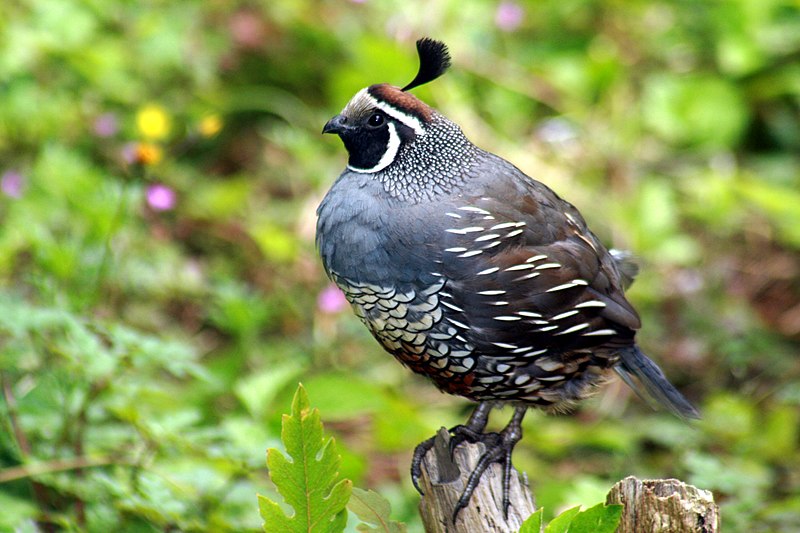Canaries (Serinus canarius) have been captive bred for hundreds of years and in that time have come to thrive upon the rather simple seed-based diets that many owners provide to them. However, for optimum health, vibrant color, enhanced singing abilities and successful reproduction, your birds will require additional dietary variety. Today I’d like to highlight some often over-looked Canary foods. The diet described here is also suitable for the Canary’s close relative, the Green Singing Finch (C. mozambicus). Read More »
Category Archives: Bird diet
Feed SubscriptionAviary Birds – Keeping and Breeding the California or Valley Quail – Part 1

The California Quail ranges along the Western edge of North America, from Oregon to Northwestern Mexico. It reaches 10 inches in length but, like all quails, appears larger due to its stocky build. Captive bred birds are readily available. Read More »
Finch Facts – the Natural History of Popular Pet Birds
When ornithologists use the term “finch”, they are usually referring to birds in the Family Fringillidae. However, the “finches” kept by pet owners are more often of the Family Estrildidae – the waxbills, weavers and sparrows. Today we’ll take a closer look at the Family Fringillidae, the True Finches.
Classification and Range
The 140+ species of True Finches range across all continents except Antarctica and Australia. The most commonly-kept birds in this family are the Bullfinch and the European Goldfinch. The American Goldfinch, is a close relative and, in captivity, interbreeds with its European cousin. Most True Finches are classified within the Subfamily Carduelinae. They nest solitarily and defend only the area around the nest. Mated pairs forage with others in loose flocks. Read More »
Conditioning Parrots, Softbills and Finches for Breeding – Diet Changes
As spring slowly makes its way across the Northern Hemisphere, aviculturists’ thoughts turn to nests and nestlings. Many birds, even those from tropical habitats, respond to the coming of spring by becoming increasingly active, hungry and interested in the opposite sex. While we often attribute this to longer days and warmer weather, this is only part of the story – the birds are more interested in the glut of new, nutritious food items that accompanies warm or rainy weather in nearly all habitats. Read More »
Feeding Wild Birds during Snowstorms – Tips and Stories – Part 1
I’ve known Red-winged Blackbirds to return to NYC as early as Groundhog Day, February 2nd. I’ve not yet had a chance to check yet, but if they’re already back this year they will be sorely disappointed by the weather. Snow poses greater hardships on most birds than does cold weather – with internal body temperatures of up to 110 F and the ability to trap air within the feathers as insulation, non-migrants do just fine when temperatures drop. Snow, however, covers food and forces birds to expend a great deal of energy foraging. Read More »
 That Bird Blog – Bird Care and History for Pet Birds
That Bird Blog – Bird Care and History for Pet Birds
